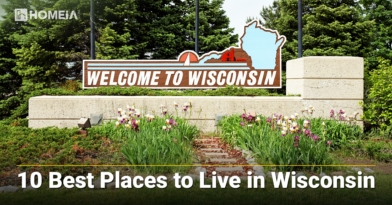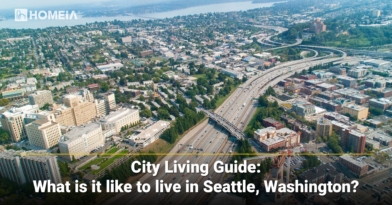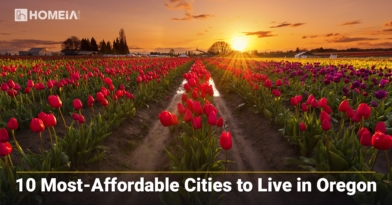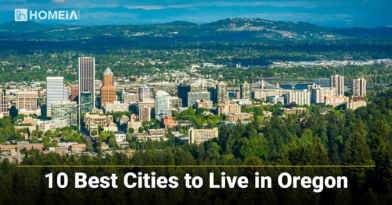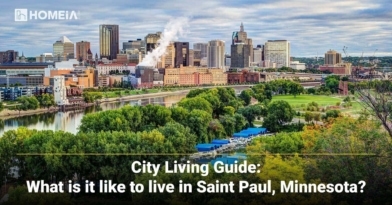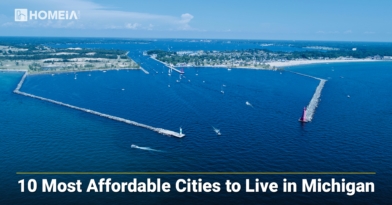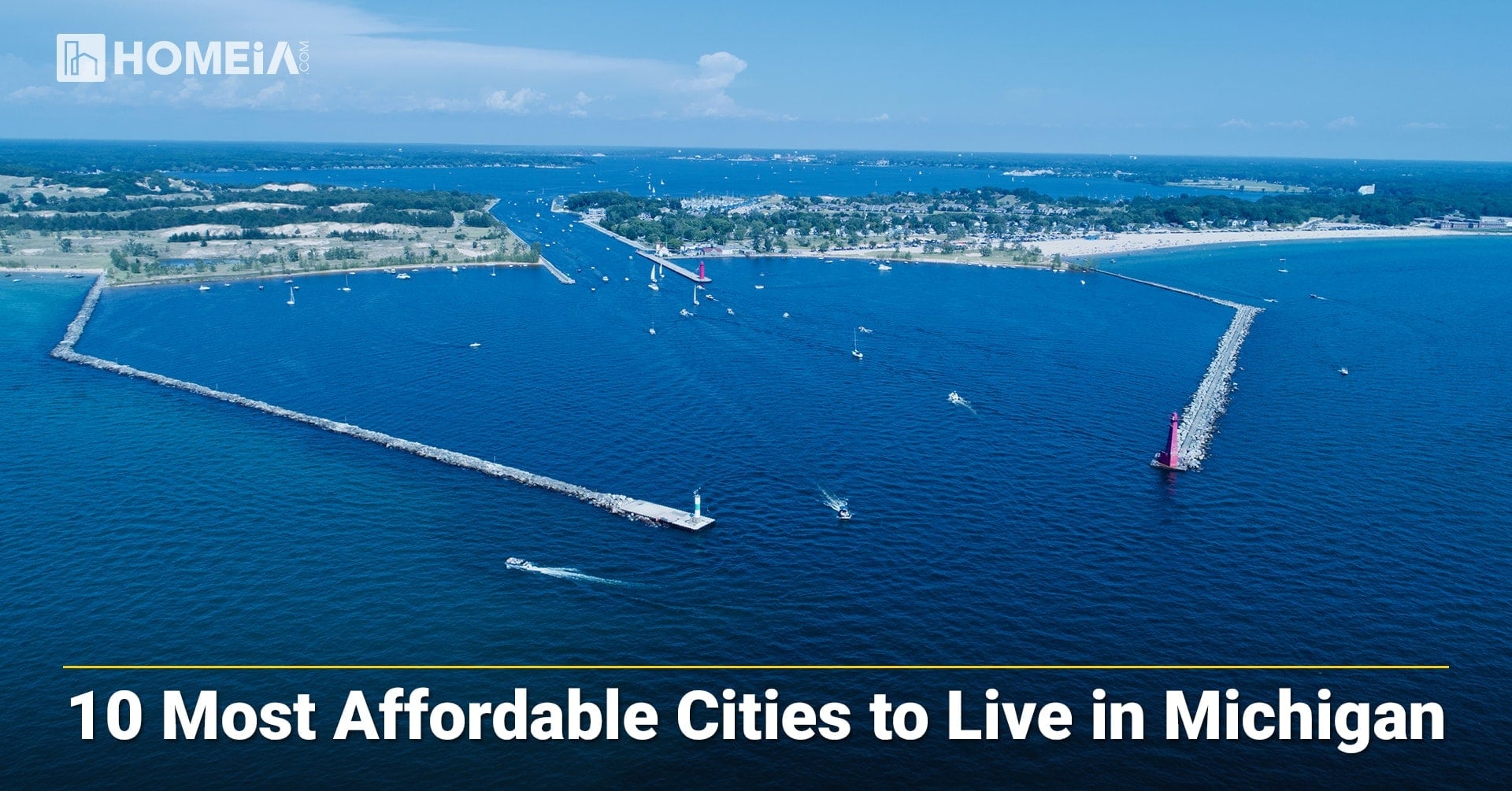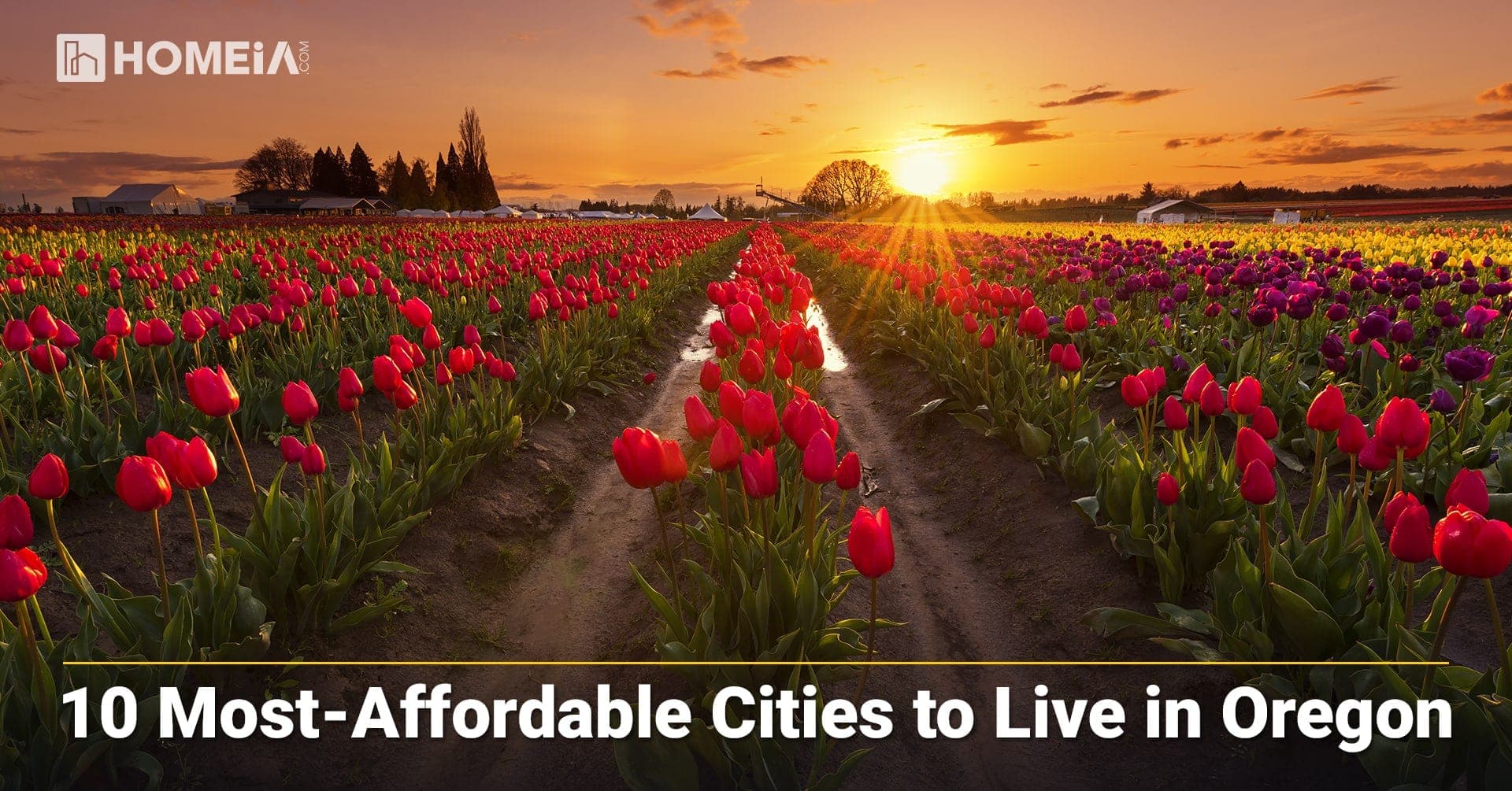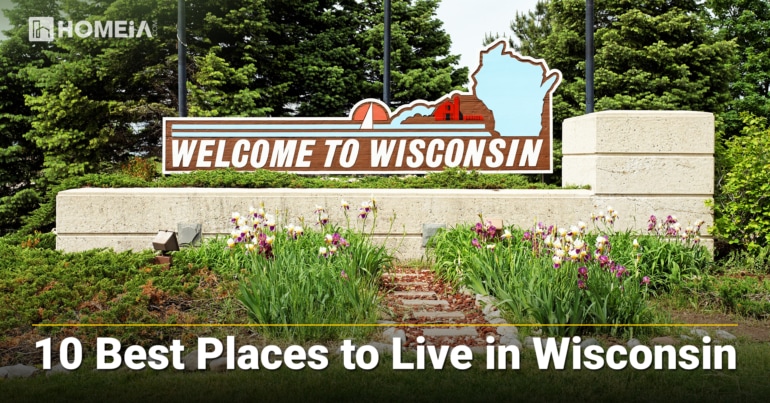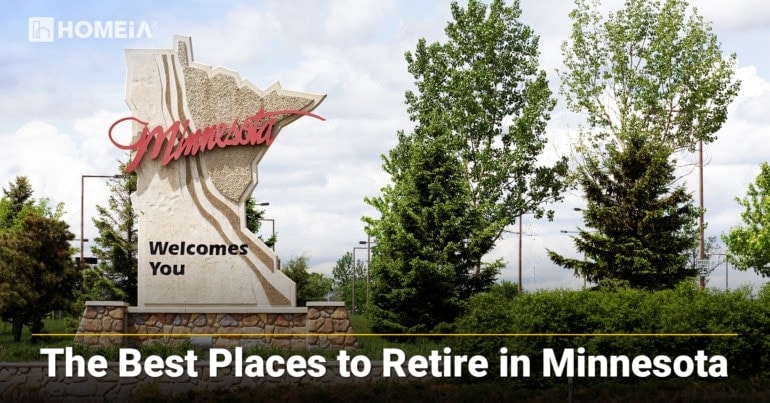What is It Like to Live in Alaska?
- Author:by The HOMEiA Team
- Category: City Living Guide
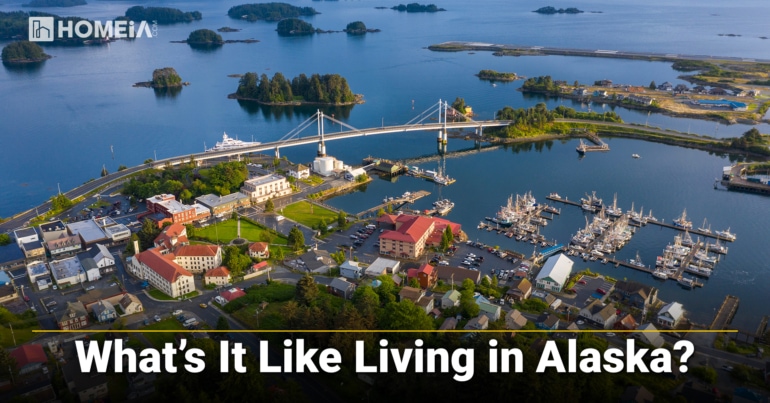
As one of the 50 United States, Alaska is a major outlier in so many ways. It’s the furthest north, west, and counting the points of the Aleutian Islands across the International Date Line, it’s also the furthest east. It’s by far the largest state by area, comprising more square miles than the next three largest combined. To hammer home the point, the capital city Juneau technically takes up more area than the entirety of Rhode Island. Alaska doesn’t have counties. Instead, it is divided up into 10 boroughs. The list of unique facts about Alaska goes on.
Over 2 million people visit Alaska each year, fueling a thriving tourism industry that makes up a large part of the state economy. Many people are interested in the beauty of the landscape and the experience of the bright summer or the northern lights in the winter. However, as the most sparsely populated state, not many people know what it’s like to live there.
If you’re someone from the lower 48 (or anywhere else for that matter), and you’re planning on making the move up to The Last Frontier, here are the top 19 exciting things (including Pros & Cons) to know about what it’s really like living in Alaska.
Table of Contents:
- 1. It’s So Cold
- 2. There’s Rain and Snow, but it Depends on the Location
- 3. There Aren’t Many People for Such a Huge Area
- 4. Housing Costs are Lower than Average
- 5. The Wildlife is Diverse
- 6. Indigenous Culture has a Large Influence
- 7. The People Value Individual Freedom
- 8. The Economy is Built on the Natural Resources
- 9. The Cost of Goods Will Give You Sticker Shock
- 10. There’s Plenty to do
- 11. The Crime Rate is High
- 12. People Know their History
- 13. Summer’s Light is Extreme…
- 14. …As is Winter’s Darkness
- 15. The Northern Lights are Spectacular
- 16. Traveling Between Cities can be Complicated
- 17. The Public Schools are Unique
- 18. The National Parks are Stunning
- 19. There’s No One Size Fits All
- Conclusion
1. It’s So Cold
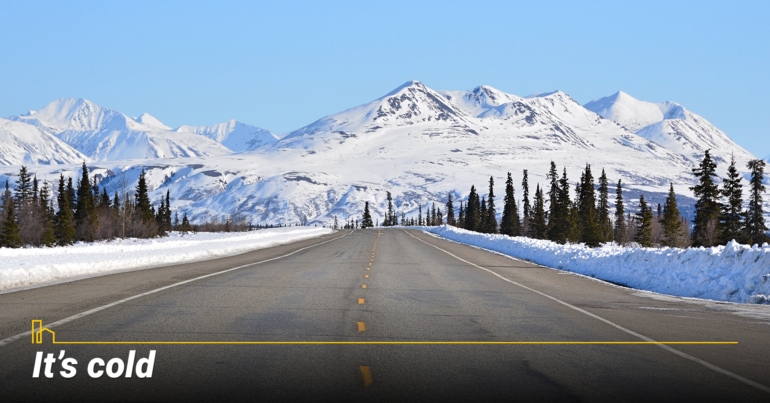
A state spanning 665,384 square miles is bound to have an incredible range of weather across its regions. As one might expect, interior cities toward the middle of the state such as Fairbanks can often reach 90 degrees Fahrenheit during the summer months, but the northern coastal areas average only between 40-60 degrees at their warmest.
Winters can get extreme. Temperatures during that time range from 0 down to negative 30! Even Americans from the coldest areas of the lower 48 will find those kinds of temperatures shocking.
4 Best Places to Live in Minnesota for Families in 2024
Bordering Canada and the Great Lakes is a state fondly dubbed as the “North Star State” and “Land of 10,000 Lakes.” The state has a lot of lakes sprawled across its more than 86,000 square mile area. In a comprehensive study of cities, Minnesota is the number one state for raising a family because of its high median income, affordable cost of living and exceptional education services…
2. There’s Rain and Snow, but it Depends on the Location
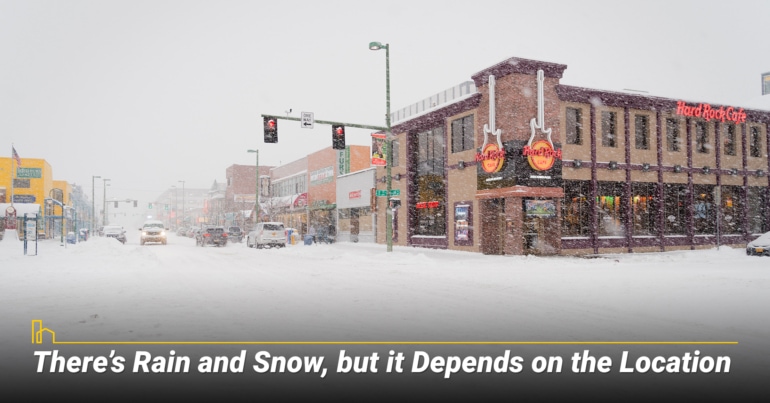
The amount of precipitation you’ll find in Alaska varies greatly depending on where you are. The southern areas can see a lot of rain and snow – approximately 200 inches per year. As you start to travel north, you’ll find some areas that average 60 inches, and some that average as few as 6. The place is just too large to pigeonhole when it comes to precipitation.
3. There Aren’t Many People for Such a Huge Area
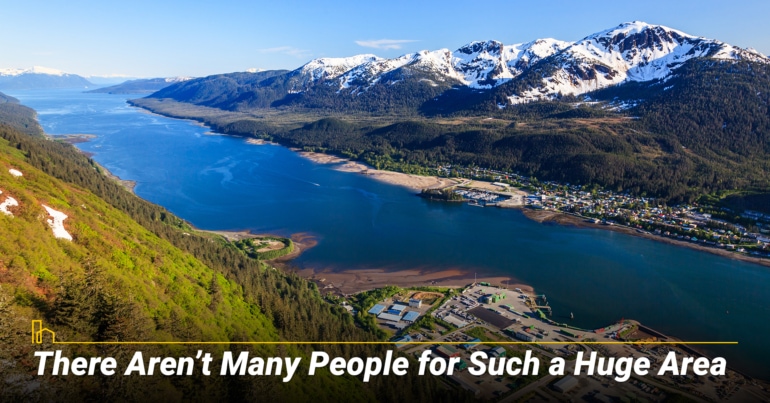
As of the 2020 census, Alaska had the third-lowest total population of 736,990. For reference, New York City alone is home to 8.3 million people. If that statistic wasn’t remarkable enough, approximately half of all Alaskans live in the greater Anchorage area. That leaves an incredible vastness of open space and wilderness with no one to be found. It’s a great place for people who prefer to be alone!
The 15 Best Places to Live & Retire in Minnesota
The cost of living in Minnesota varies by location and is highest in its large metro areas, but on the whole, it compares well to the coasts and to big cities. Each community in Minnesota has its own personality, and here we will introduce you to 15 of the best options for retiring in the North Star State…
4. Housing Costs are Lower than Average

The median home price in 2022 for the United States as a whole is about $428,700. Alaska itself comes in at $337,373. While that does seem slightly lower for the nation, it is a record high for the state. There is quite a range of home costs depending on what part of Alaska you’re shopping in. Desirable large cities like Juneau can average about $475,000 and fast-growing Ketchikan comes in at about $440,000. Renting a home or apartment across Alaska will cost very close to the national average. It usually comes in just a tad lower than that most years.
5. The Wildlife is Diverse
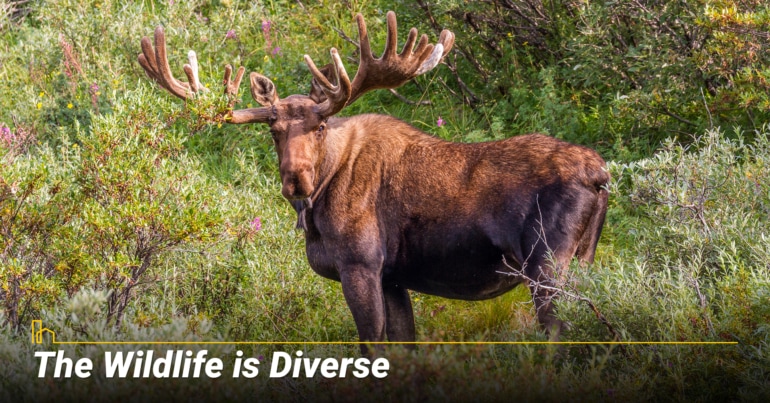
Alaska’s wildlife is as diverse as the landscape itself. Nature tourists flock to the state to check out Alaska’s big 5: moose, bears, caribou, Dall sheep (rams), and wolves. Marine life is abundant on the coast. Here you can find humpback whales, orcas, puffins, and sea otters, just to name a few. And the amazing aerial life such as bald eagles and other majestic birds of prey abound throughout the entire state.
10 Best Places to Live in Wisconsin
Wisconsin is a friendly and casual place to enjoy all four seasons. Best known for its dairy farms and pro sports, it is also home to tech companies and a world-class research university. We assign a HOMEiA Score for each city, which provides an overall assessment of its safety and appeal as a place to call home…
6. Indigenous Culture has a Large Influence
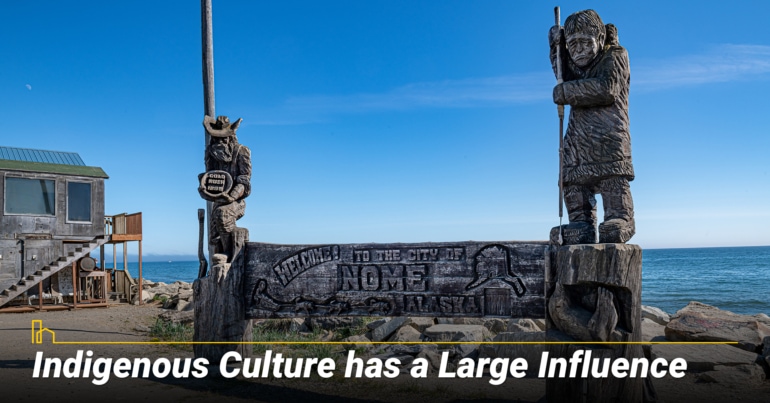
Historians believe that the first ever humans in North America came over the Bering Land Bridge from Asia thousands of years ago. That native tradition remains strong in Alaska today. 229 federally-recognized tribes make up 15% of Alaska’s population. Many of these tribes still adhere to an old-fashioned lifestyle of living off the land hunting and fishing. Modern-day Alaskans tend to take pride in the cultural diversity of their state.
7. The People Value Individual Freedom

While Alaskans typically vote to send conservative representatives to Washington, more than half of the total population deem themselves unaffiliated or undeclared regarding a specific political party. The important issues for Alaskans are privacy, individual freedom, and minimal government interference. It makes sense when you consider the long Alaskan tradition of living resourcefully and independently.
What is It Like Living in Seattle, Washington?
Seattle is a beautiful port city on the Puget Sound in the northwestern U.S. state of Washington, 100 miles south of the Canadian border. As the largest city in the state (and the Pacific Northwest for that matter), Seattle is heavily endowed with natural resources. This hilly city earned…
8. The Economy is Built on the Natural Resources
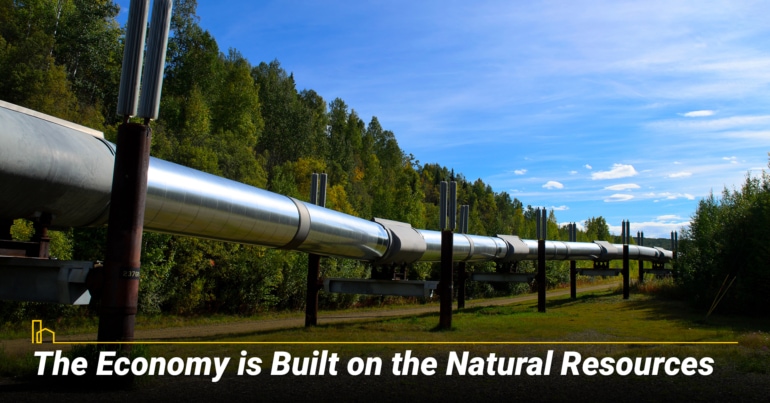
The biggest part of Alaska’s economy is the oil and fuel industry. According to some statistics, the state produces up to 21% of the U.S. oil production and up to 3% globally. Other important industries include mining, fishing, health care, and tourism. All of these industries thrive in Alaska due to the abundance of the resources found in the land and the natural beauty the state has to offer.
In 2022, Alaska’s unemployment rate is higher than the national average, coming in at about 4.6%.
9. The Cost of Goods Will Give You Sticker Shock
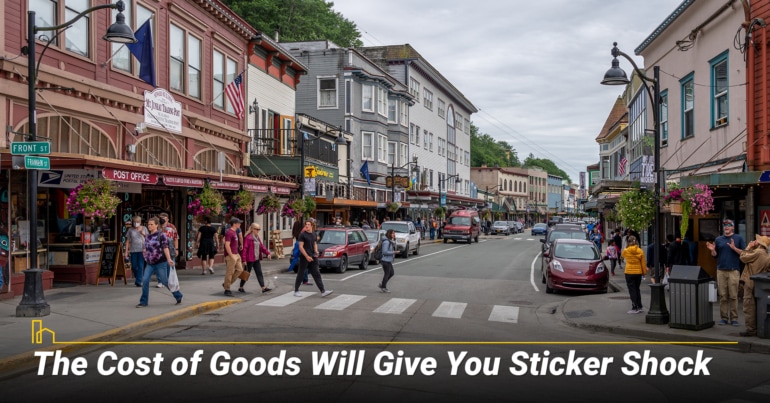
Due to the extra challenges of shipping to difficult-to-reach locations, everything tends to cost a lot more in Alaska. It’s just one of the challenges of the state, and locals joke that it’s part of the charm. A gallon of milk here can cost close to $10. Gas prices tend to rise more quickly than they do in the lower 48, and take longer to come down. Since so many Alaskans take pride in being self-sufficient, you’ll never hear them complain.
12 Key Factors to Know About Living in Washington, D.C.
The capital city of the United States has a reputation for being a busy political and business hub, but there is a lot more to discover and enjoy for residents of this diverse city. Washington, DC is consistently ranked among Business Insider’s and Niche’s top 50 cities to live in, and there are…
10. There’s Plenty to do
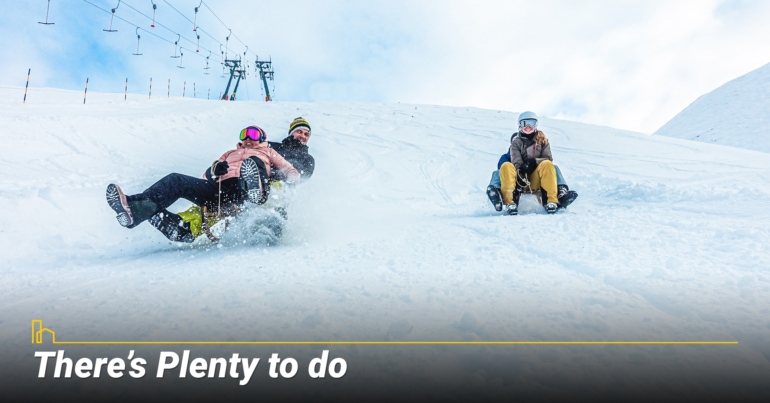
The stereotype of every Alaskan hunkering down for the dark winter is untrue. Alaskans take part in many, if not all, of the same activities as the people who live in the lower 48. They enjoy the outdoors because so much of it is available, with hunting, fishing, skiing, snowmobiling, swimming, bike riding, etc. They also enjoy social activities like dining out, going to the movies, golfing, and gathering with friends. The massive state has plenty to offer everyone.
11. The Crime Rate is High

For a place with so few people around, Alaska does have a high crime rate. The violent crime rate is the highest in the entire U.S. and is more than double the national average. Property crimes are the 7th highest in the nation. Despite the actual numbers, Alaskans typically report feeling safe and secure.
10 Most Affordable Places to Live in Oregon
Geographically, Oregon boasts dramatic Pacific coastlines as well as volcanic mountain ranges. Its climate spans from rainforests along the coast to semi-arid conditions in the central and southeastern regions. The Beaver State is home to both Crater Lake, the deepest lake in the U.S., and Mount Hood, the second-most-climbed mountain in the world…
12. People Know their History
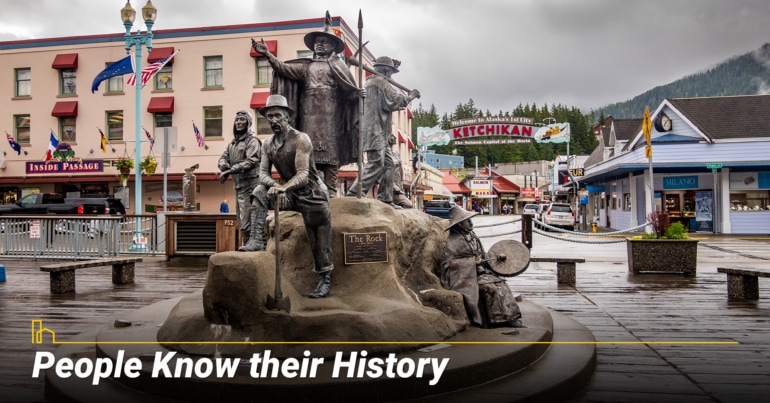
America purchased the vast territory from Russia in 1867 and it didn’t become a state until 1959. The time between saw much exploration and expansion as many miners rushed for gold in the late 1800s, interacting with the indigenous tribes that had already settled there for centuries. The go-getter spirit still endures within the Alaskan population today.
13. Summer’s Light is Extreme…

Alaska is known as The Last Frontier, but many parts have been unofficially dubbed The Land of the Midnight Sun. From late April to late August each year, the sun is far enough above the horizon to make it seem like daytime forever. It isn’t uncommon to go out for a round of golf in the wee hours of the morning or witness giant crops unfathomable in the lower 48. It’s a neat concept to most Americans and a huge tourist draw for Alaska.
11 Best Places to Live in Pennsylvania in 2024
Pennsylvania has it all: caves, mountains, waterfalls, culture and history. It is the 33rd-largest state by area and the fifth-largest by population. There are a lot of great places to live in the state. Below, you will find descriptions of 11 of them…
14. …As is Winter’s Darkness
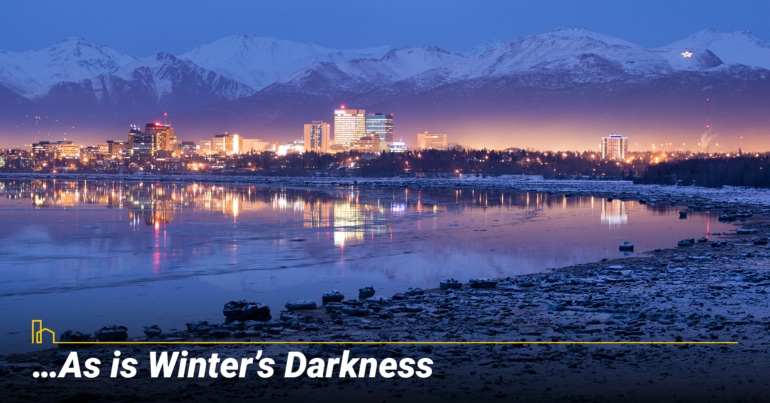
The flip side of the midnight sun months in Alaska is of course the extra darkness that comes during the winter months. While it is a myth that most of Alaska go completely dark for 6 months, the northernmost areas do have to deal with extended darkness during the months of November-January. The people of Utqiagvik, formerly known as Barrow, don’t see the sun above the horizon for two straight months!
15. The Northern Lights are Spectacular
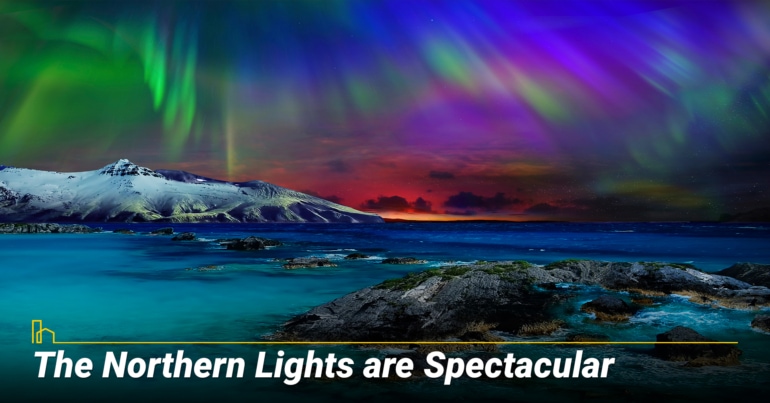
One of the primary reasons the Alaskan tourism industry stays afloat during the cold, dark winter months is the visibility of the aurora borealis, also known as the northern lights. They occur when certain particles interact with gasses in the atmosphere and give off a glowing light in the sky. Various tours are given throughout Alaska’s cities, and tourists will want to travel outside of the downtown areas to get the best views.
The 10 Best Places to Live in Oregon
Oregon is a study in contrasts. It has 363 miles of the most breathtaking coastline you’ll encounter anywhere in the world. But it also has dense forests, mountain ranges, and high desert country. Here’re the 10 Best Cities to Live in Oregon…
16. Traveling Between Cities can be Complicated
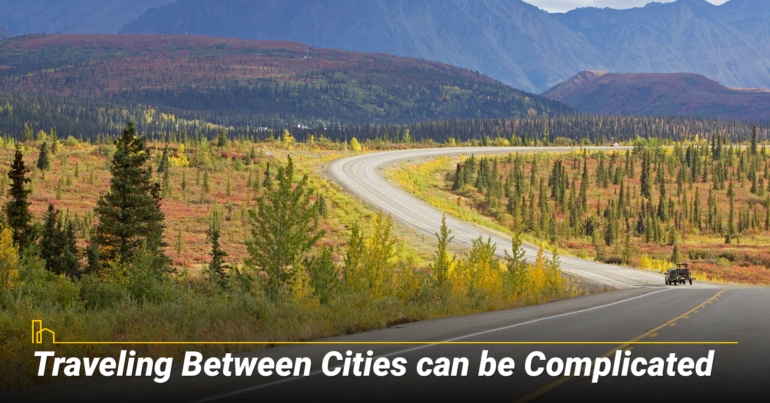
It takes a long time to travel anywhere in Alaska, and it isn’t just due to the size. There aren’t any interstate highways since there are no other states to travel to, so the highways that are there tend to be smaller. They also wind through terrain that rises and falls through the rough landscape. Traveling in the winter is especially challenging, owing to the long periods of darkness and the cold. Some roads can be completely covered in snow and frost for months on end.
17. The Public Schools are Unique

While Alaska’s public schools do not typically rank very high in contrast to the rest of the states, there are of course a wide variety of school districts scattered throughout. In some of the larger cities, you can find schools that serve thousands of students, while some of the sparse areas may have schools with fewer than 20 students.
Alaska presents some unique challenges for its school-aged population. They have been on the leading edge of virtual and distance learning for a long time since the weather often prevents students from attending school in person. Since schools can be so far apart, some schools even provide small planes for their sports teams to travel to other schools for games!
12 Key Factors to Know About Living in St. Paul, MN
This historic city has that and much more. It’s a beloved hometown for many with distinct neighborhoods, employment opportunity, dining and nightlife. In this article, we’ll discuss highlights for Saint Paul residents and guests regarding standard of living, housing, education, business, healthcare, weather and recreation…
18. The National Parks are Stunning
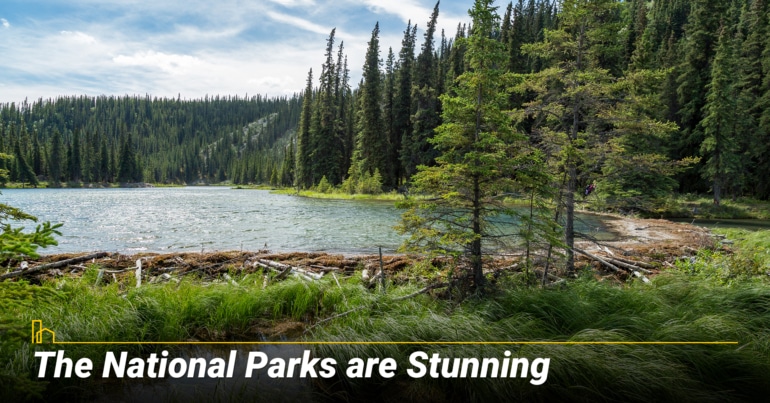
Mountains, rivers, lakes, forests, and stunning wildlife highlight the Alaska national parks and keep thousands of tourists coming back each year. The most famous is Denali National Park, which is home to the highest mountain in North America.
Glacier Bay draws the most visitors. People come to see the coast’s active glaciers and stunning views. Wrangell-St. Elias National Park is so vast, that it has more square mileage than the country of Switzerland.
19. There’s No One Size Fits All

Cities in Alaska are not all built the same. The experience of living in Juneau will differ greatly from choosing a place in the far north. Here are a few of the regions new settlers can choose from that may fit a diverse array of needs:
- A. Southeast: This area is also known as Alaska’s panhandle. It includes mountainous terrain, and much of it isn’t accessible by car. Juneau is known as the only state capital that is inaccessible by road.
- B. Southcentral: The southcentral region is probably the most traditional area to live in if you’re from the lower 48. Here you have the option of driving around in a car, and the city of Anchorage offers a traditional mid-city experience for the average American.
- C. Southwest: This area has a high concentration of native tribes and most people who live here live in small villages. The region is defined by coastal areas and volcanoes, and wildlife is abundant here.
- D. Interior: The interior section is developed due to the gold rush in the late 1800s. There are plenty of roads and small towns, and it provides a familiar way of life for people who are used to other states. It’s relatively affordable too.
- E. Far North: This is the extreme part of Alaska that drives so many of the stereotypes. The Far North sees two straight months of darkness in the winter, and many of the towns are only accessible by plane or snowmobile. This region is not for the faint of heart!
10 Most Affordable Places to Live in Michigan
Michigan is the only state in the United States with two separate peninsulas and five surrounding Great Lakes. Its landscape is diverse, ranging from industrialized skylines to sweeping sand dunes to gorgeous waterfalls. Once home to Henry Ford, it’s also considered the epicenter of America’s…
Conclusion
The geographic location of Alaska makes it one of the most unique places to live in the entire United States. The majestic beauty of the natural landscapes makes it one of the more scenic places to live.
It also gives its residents the bright beautiful highs of the constant summer sun and the deep darkness of the long winter. Beyond all that, Alaskans take pride in their cities, where people value individual freedom and the ability for individuals to carve out their own lives.
Anyone who’s ever asked what it’s like to live in Alaska will find that it is similar to living anywhere else in the United States in many ways, but it’s the unique parts that make The Last Frontier such an incredibly special place to live.
12 Best Places in Washington State to Raise a Family
We’ll explore areas of the state that represent all different value systems and explain why people love living there. We’ll present each place’s unique characteristics, complete with opinions from locals…


